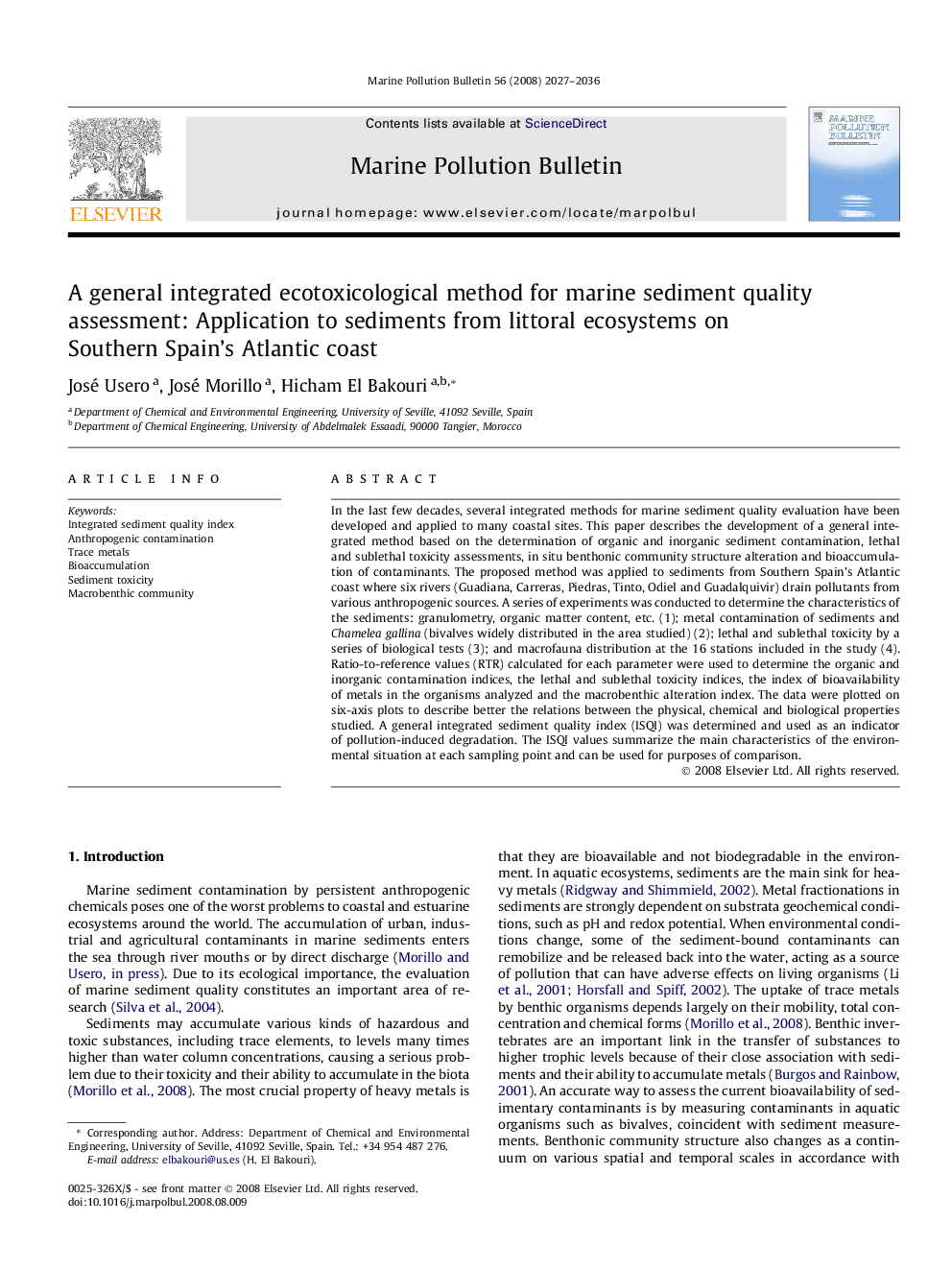| Article ID | Journal | Published Year | Pages | File Type |
|---|---|---|---|---|
| 4477411 | Marine Pollution Bulletin | 2008 | 10 Pages |
In the last few decades, several integrated methods for marine sediment quality evaluation have been developed and applied to many coastal sites. This paper describes the development of a general integrated method based on the determination of organic and inorganic sediment contamination, lethal and sublethal toxicity assessments, in situ benthonic community structure alteration and bioaccumulation of contaminants. The proposed method was applied to sediments from Southern Spain’s Atlantic coast where six rivers (Guadiana, Carreras, Piedras, Tinto, Odiel and Guadalquivir) drain pollutants from various anthropogenic sources. A series of experiments was conducted to determine the characteristics of the sediments: granulometry, organic matter content, etc. (1); metal contamination of sediments and Chamelea gallina (bivalves widely distributed in the area studied) (2); lethal and sublethal toxicity by a series of biological tests (3); and macrofauna distribution at the 16 stations included in the study (4). Ratio-to-reference values (RTR) calculated for each parameter were used to determine the organic and inorganic contamination indices, the lethal and sublethal toxicity indices, the index of bioavailability of metals in the organisms analyzed and the macrobenthic alteration index. The data were plotted on six-axis plots to describe better the relations between the physical, chemical and biological properties studied. A general integrated sediment quality index (ISQI) was determined and used as an indicator of pollution-induced degradation. The ISQI values summarize the main characteristics of the environmental situation at each sampling point and can be used for purposes of comparison.
